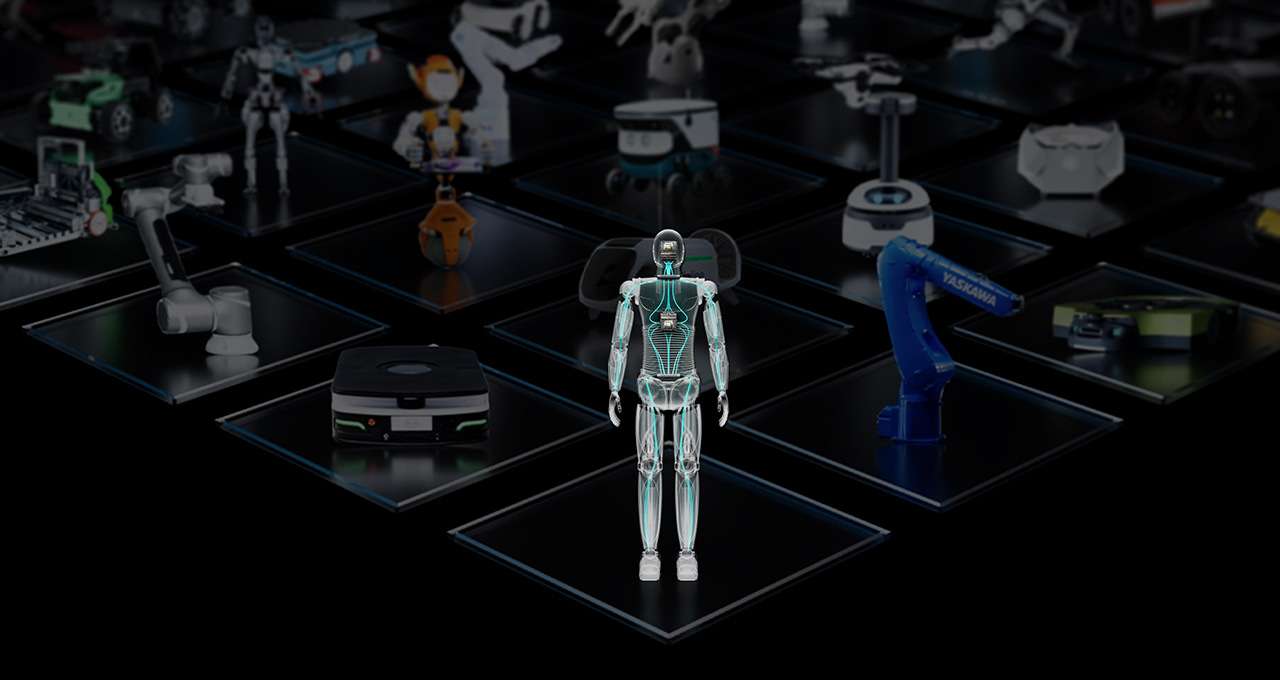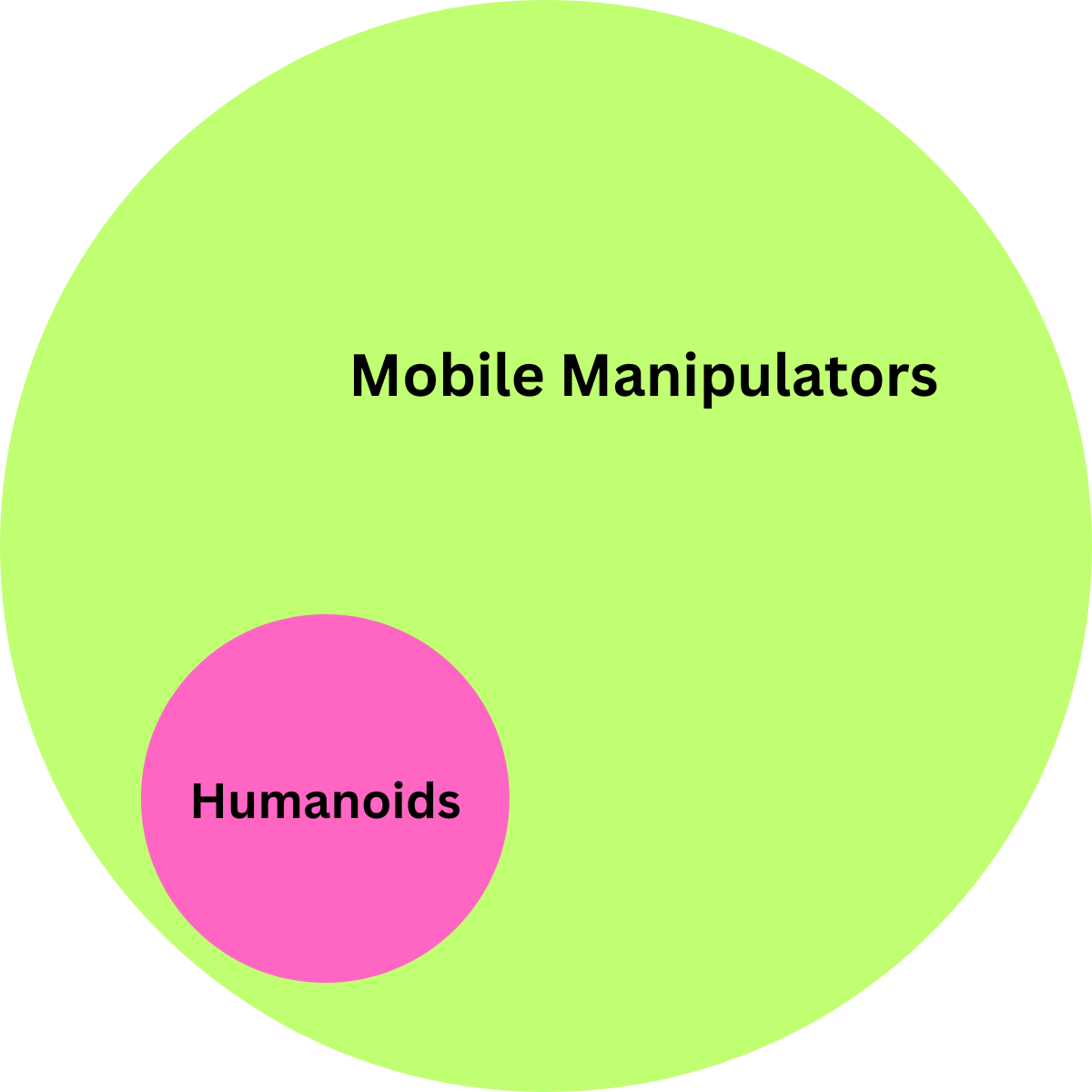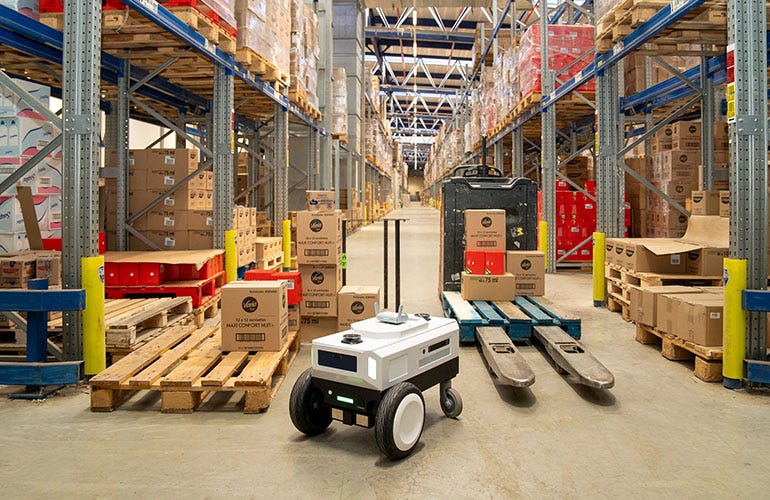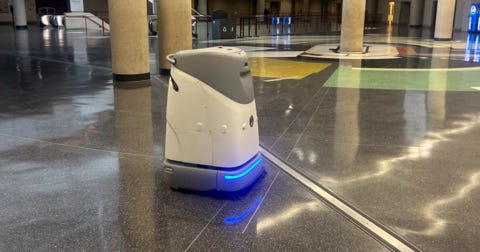The Human Form Is Flawed, So Why Do We Want Humanoid Robots?
We have robots because they are better than us in numerous ways, so why do we want them to look like us?
Aaron’s Thoughts On The Week
“I believe that robots should only have faces if they truly need them.” - Donald Norman
NVIDIA CEO Jensen Huang loves robots, especially humanoid robots. In two recent talks he has made that very clear. Earlier this year, he showcased nine human-like robots on stage. He mentioned them again during a Sunday speech at a Taiwan tech conference, emphasizing that two types of robots, self-driving cars and humanoid robots, would be in high demand.
"The easiest robot to adapt into the world are humanoid robots because we built the world for us. We also have the most amount of data to train these robots than other types of robots because we have the same physique," Huang said.
I agree and disagree with him on this. While I agree that our world was indeed built around our form factor, several evolutionary biologists and other scientists have documented that the human form is severely flawed.
Dr. Lents, a professor of biology at John Jay College of the City University of New York, stated, “Evolution has not perfected our species—far from it. The human body, wondrous and beautiful as it may be, is cluttered with glitches and inefficiencies, the messy byproducts of evolution’s creative process. Natural selection is a blind, groping process, one that frequently produces terrible problems in addition to workable prototypes.”
One only needs to look at the non-humanoid robots we have deployed that outpace us all the time. From high-speed SCARA robots that move at blistering speeds and crack out products faster than any human can to autonomous mobile robots that can move thousands of pounds of product all day long without tiring, we already have robots in our world showing our limitations. So why would building robots that look like us and function like us going to be such a great leap forward?
First, What Is A Humanoid?
There are many questions about what a humanoid robot really is. Does it need to just look human, or does it need to just have “humanoid” elements? A humanoid robot is generally defined as a robot designed to resemble the human body. This resemblance can range from having a basic structure with a head, torso, arms, and legs to mimicking human movements and behaviors more closely. Definitions appear to vary slightly depending on the context and the specific features of the robot.
In the past couple of months, I have been told by someone that each one of these is a “humanoid” robot. I would say ATLAS is definitely a humanoid, but after that, the only other one I would say is the FOODLY robot, even though it appears to be on a cart that people can move around with. It definitely has arms, a torso, and something that looks like a head.
In an earlier column, I stated that humanoids, in my opinion, were definitely mobile manipulators. However, not all mobile manipulators are humanoids. This is also because I firmly believe that there will always be more mobile manipulators even when you subtract the humanoids from the the total numbers.
Again in my opinion, the core two elements any mobile manipulator must have, therefore any humanoid must have, is mobility and the ability to grasp/manipulate items in their environment. Now, mobility does not need to be legs because humans can move without using legs. Also, recently, at the IEEE ICRA event in Japan, many humanoid companies have stated that they either are giving up or do not plan to use legs for their robots. One CEO said, “As long as the ADA (Americans with Disability Act) is in place, wheels are just fine.”
C-3PO vs. R2-D2
I would like Jensen Huang and others pushing humanoids to answer this: We use robots to improve on what we can not do (or don’t want to do), so why do we need a robot that just “copies” us in both actions and form?
Industrial robots can lift more than us. They can also go much faster and be much more accurate. When we are picking up a heavy box, it is a whole-body activity. We place our feet in a specific way; then, we put our arms and hands in a way to lift and move the box. If we have to move the box over any distance, we have to coordinate our legs and arms to ensure we have a good hold on the box. Many of us walk with the box while slightly hunched over to ensure we can complete the trip with the box, especially heavy ones.
For most industrial robots, picking up the box and moving it is done in a fluid single motion. If the box needs to move, a mobile robot can do that for us. So what would we want a humanoid robot with our same flawed design to do the same tasks over what non-humanoid robots are already doing and quite frankly exceeding at?
It goes back to the debate of if you could have either R2-D2 or C-3PO, which one would you pick? In most polls, even some I have conducted, R2-D2 always comes out on top. Sometimes he wins by large margins or just a few votes, but he always is the favorite. Why?
For most, R2-D2's small, versatile droid design makes him appear more practical and capable in various situations. His range of gadgets and tools allows him to perform numerous functions, from repairing starships to hacking into systems, which makes him essential in many critical moments throughout the series. In contrast, C-3PO's humanoid form and primary function as a protocol droid specializing in translation make him appear less versatile and more limited in action scenarios.
Also, let’s remember that C-3PO could not keep up when it was time to move fast.
Is The C-3PO Model The Future
Could humanoids be ideal for specialize tasks then? Like C-3PO that pretty much had two functions - protocol droid and being a pain in Han Solo’s butt - could humanoids be the ideal robot for single tasks?
This runs counter to those pushing for a general-purpose robot when talking about humanoids, but what is not to say a robot like R2-D2 wouldn’t be a better general-purpose robot. Does the human form factor limit the ability to do everything in any situation?
There have been some successes with the humanoid robot form factor working well in healthcare and education, where having something that people can relate to has its benefits. And this is probably why we are so looking hard at making humanoid robots become a norm.
If robots are working with us, wouldn’t it be nice if they looked like us. It sounds a bit hokey, but there is something deeply human in wanting to connect with those around us. Just remember that we may still have issues with them.
Robot News Of The Week
RGo Robotics integrates NVIDIA Isaac technology into its perception platforms
RGo Robotics Inc. recently announced that it will be incorporating NVIDIA’s Isaac Robotics technology into its systems, which will help advance AI-powered automation. This integration will involve RGo's Perception Engine, an AI and vision system, and NVIDIA's Isaac Perceptor acceleration libraries. The aim is to facilitate the deployment of mobile robots in various environments, using the NVIDIA Nova Orin Developer kit. According to Amir Bousani, the co-founder and CEO of RGo Robotics, the company's Perception Engine has already been implemented in dynamic warehousing and manufacturing settings using NVIDIA Jetson Orin modules. This integration is anticipated to make intelligent automation more accessible, as it will enable more customers to deploy intelligent mobile machines reliably in any environment. RGo Robotics' technology focuses on enabling machines to perceive their surroundings, allowing robots to learn on the go through computer vision, AI algorithms, and scalable sensor-fusion technology.
Aramark is partnering with Pringle Robotics to install floor cleaning robots and operational software solutions at key customer facilities.
ABB Launches Next-Gen Robotics Control Platform
ABB Robotics has unveiled OmniCore, an advanced automation platform. This platform represents a significant advancement in control architecture, making it modular and future-proof. It will facilitate seamless integration of AI, sensors, cloud computing, and edge computing systems, thereby enabling the development of sophisticated and autonomous robotic applications.
Robot Research In The News
AI and robotics enhance design of sustainable aerogels for wearable tech
The engineers at the University of Maryland have developed a model that combines machine learning and collaborative robotics to streamline the design of aerogel materials used in wearable green tech. This accelerated method, led by Assistant Professor Po-Yen Chen, automates the design processes for new materials. Aerogels are lightweight and porous materials used in thermal insulation and wearable technologies, and the research team's approach combines robotics, machine learning algorithms, and materials science to enable the accelerated design of aerogels with programmable properties, achieving a 95% accuracy rate.
ChatGPT Enables Roboticist to Choreograph Flying Robots
Professor Angela Schoellig from the Technical University of Munich (TUM) has been using ChatGPT to develop choreographies for swarms of drones to perform along to music. ChatGPT, a large language model (LLM), has been successful in generating choreographies for drones. The system uses an additional safety filter to prevent mid-air collisions, enabling the drones to perform airborne choreographies safely.
The interface is user-friendly, allowing a doctoral student to select a music track and input a text request for a suggested choreography. The drones' flight paths are then checked for feasibility by an algorithm before the performance.
Schoellig's team has installed ceiling-mounted cameras to monitor the drones' positions in a 40-square-meter room. By comparing the detected positions with the desired ones, the system ensures the safety of the choreographies.
The combination of ChatGPT and the safety filter has significantly improved the safety and efficiency of developing drone choreographies. Schoellig sees potential for using a similar interface via ChatGPT for other types of robots, aiming to improve their success rates in various tasks, such as voice-controlled picking up of objects and laying cables.
She believes that with continual improvement, this approach could eventually enable reprogramming of various robots using voice commands, eliminating the need for expert knowledge or programming skills.
Robot Workforce Story Of The Week
Columbus State University to expand robotics program with building on Fort Moore
The local state university's robotics program is getting a major addition. Columbus State University (CSU) has signed an agreement with Fort Moore to add a 25,000-square-foot building on a post dedicated to robotics engineering. This will provide space for students to test and fly drones and operate an intricate tracking system.
Robot Video Of The Week
At the NAVER 1784 tower in Seongnam, South Korea, a Starbucks experience awaits with around 100 service robots fulfilling customer orders. These 110 cm tall delivery robots use dedicated elevators to ensure swift and efficient deliveries. Managed remotely by a data center, these robots exchange commands via 5G signals and operate on the AI, Robot, Cloud (ARC) platform. The building serves as a testing ground for the company’s advancements in robotics, AI, and cloud services.
Upcoming Robot Events
June 24-27 International Conference on Space Robotics (Luxemborg)
July 2-4 International Workshop on Robot Motion and Control (Poznan, Poland)
July 8-12 American Control Conference (Toronto, Canada)
Aug. 6-9 International Woodworking Fair (Chicago, IL)
Sept. 9-14 IMTS (Chicago, IL)
Oct. 1-3 International Robot Safety Conference (Cincinnati, OH)
Oct. 8-10 Autonomous Mobile Robots & Logistics Conference (Memphis, TN)
Oct. 14-18 International Conference on Intelligent Robots and Systems (Abu Dhabi)
Oct. 15-17 Fabtech (Orlando, FL)
Oct. 16-17 RoboBusiness (Santa Clara, CA)
Oct. 28-Nov. 1 ASTM Intl. Conference on Advanced Manufacturing (Atlanta, GA)
Nov. 22-24 Humanoids 2024 (Nancy, France)










I think people are very confused about the promises about robots. Maybe investors too. McDonalds and other companies have automated all their orders using screen panels. Most restaurant robots are wheeled or manipulator arms.
What is the point of Tesla promising a versatile robot for industrial and home use? Don't investors understand that even common sense, and what makes a person not stand on top of a robot, is a long way off? Maybe the development of humanoids is just the natural future way to just keep the money flowing.
Thanks a lot for your article.